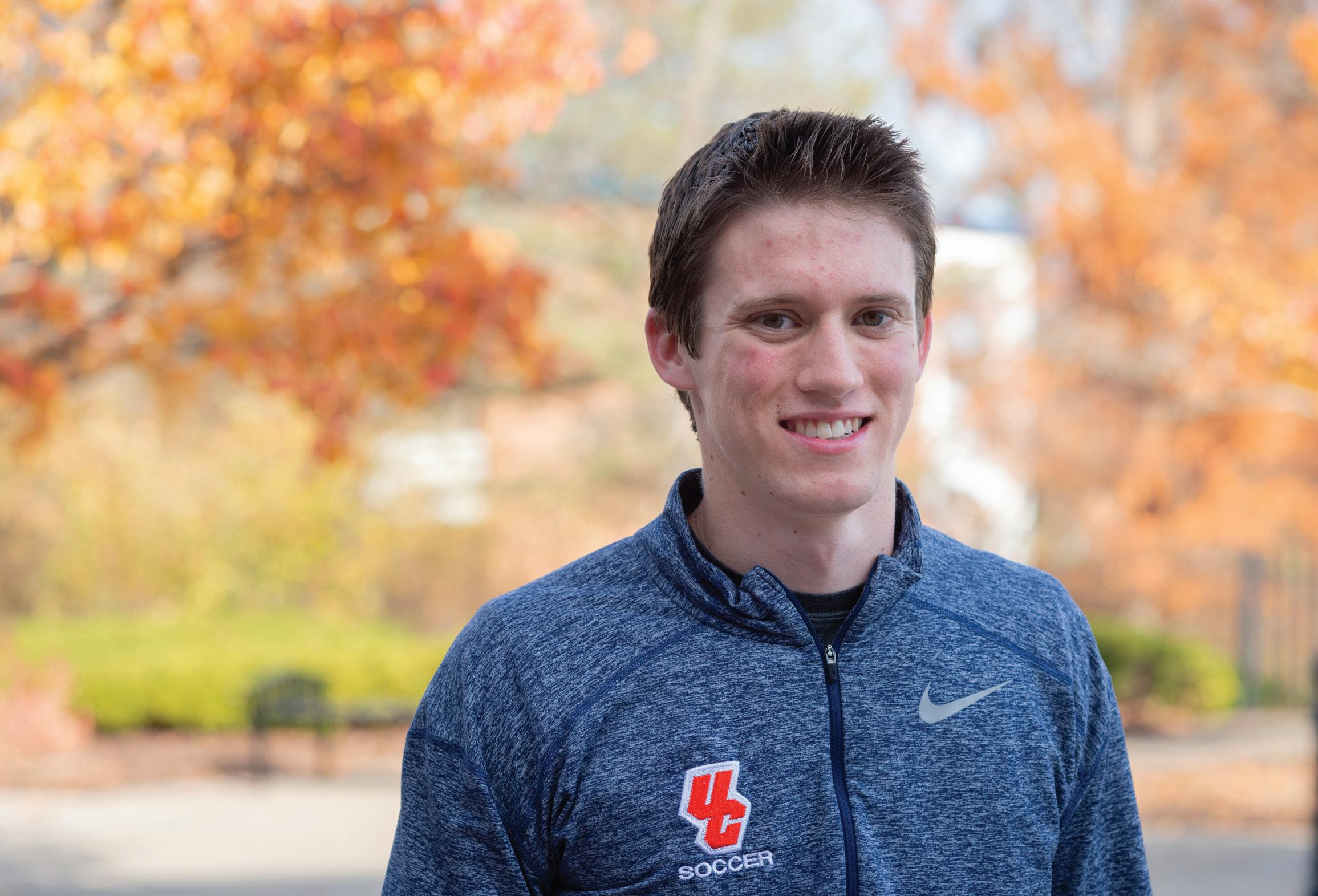
1 minute read
Everyday Pioneers: Zackery Caporale ’21
By analyzing pages and pages of health data, biology student Zackery Caporale ’21 is searching for patterns that may unlock some of the mystery surrounding lung cancer.
For cancer researchers studying gene mutations and their role in certain cancers, the National Institutes of Health’s vast database of patient case files is arguably the most valuable resource in the search for a cure.
One of those researchers is UC biology student Zackery Caporale ’21.
With help from Assistant Professor of Biology Brandee Rockefeller, Caporale has spent the past several months combing through NIH’s patient case files looking for the specific gene mutations present in patients with non-small cell lung cancer, which accounts for about 80 percent of all lung cancer cases, according to the American Cancer Society.
“Specific mutations in the Kirsten rat sarcoma viral oncogene homolog, known as the KRAS gene, and Epidermal growth factor receptor, or EGFR, may serve as potential indicators of developing lung cancers in patients with similar mutation types,” explains Caporale.
“Detecting these patterns could allow improved predictions of cancer development, and will eventually help us to determine more effective treatments for this type of lung cancer.”
Caporale, who plans to pursue medical school after graduating from UC, says he was inspired to study medicine and medical research after seeing the toll diseases like Alzheimer’s have taken on his own loved ones.
“I’ve always been interested in the study of life on a molecular level and the development of diseases. Understanding and discovering the functions of living systems allows me to see the world in a different way,” he says, “And when we have better insight into what causes various diseases, we’re closer to finding a cure.”
For Brandee Rockefeller, the benefit goes beyond having Caporale’s help in the lab.
“As a scientist, there is nothing better than getting students involved in your research,” she says. “There is nothing better than seeing a young scientist when things start to click and realizing ‘Wow, I’m doing something really big here.’”








